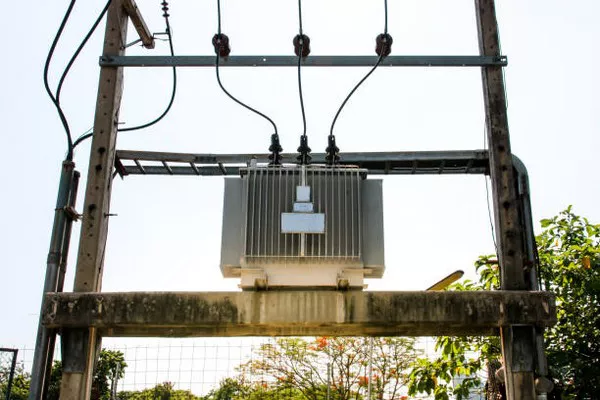Automatic Voltage Stabilizers (AVS) are indispensable devices in modern electrical systems, designed to regulate and stabilize voltage fluctuations within acceptable limits. They play a crucial role in protecting sensitive electronic equipment and appliances from damage caused by overvoltage or undervoltage conditions. Essentially, an AVS ensures that the voltage supplied to connected devices remains constant, regardless of fluctuations in the input voltage from the main power source.
Understanding Transformers
Transformers are key components in automatic voltage stabilizers, serving to adjust and stabilize the voltage output. They operate on the principle of electromagnetic induction, where changes in current flow through the primary winding induce a proportional voltage change in the secondary winding. By varying the turns ratio between the primary and secondary windings, transformers can step up or step down the voltage level as required.
Types of Transformers Used
In automatic voltage stabilizers, various types of transformers are utilized to achieve voltage regulation. One commonly employed type is the autotransformer, which consists of a single winding with taps along its length. Autotransformers are more compact and cost-effective compared to conventional transformers, making them suitable for applications where space and budget constraints are considerations.
Working Principle
The working principle of transformers in automatic voltage stabilizers revolves around adjusting the voltage level to maintain a constant output within a specified range. When the input voltage deviates from the desired level, the transformer alters the turns ratio to compensate for the variation, thereby stabilizing the output voltage. This process ensures that connected devices receive a consistent and reliable power supply, safeguarding them from potential damage.
Advantages and Disadvantages
Autotransformers offer several advantages, including high efficiency, compact size, and cost-effectiveness. However, they have limitations concerning isolation between the primary and secondary circuits, which may pose safety concerns in certain applications. Conventional transformers provide better isolation but are bulkier and more expensive. The choice between autotransformers and conventional transformers depends on specific requirements and considerations such as space availability, budget, and safety concerns.
Selection Criteria
When selecting a transformer for an automatic voltage stabilizer, several factors must be taken into account. These include the power rating, input voltage range, output voltage regulation, efficiency, size, and cost. It is essential to choose a transformer that can handle the expected load while providing stable voltage regulation within acceptable tolerances.
Installation and Maintenance
Proper installation and regular maintenance are crucial for ensuring the optimal performance and longevity of transformers in automatic voltage stabilizers. Installation should be carried out by qualified personnel following manufacturer guidelines and safety standards. Routine maintenance tasks may include inspection, cleaning, and testing to detect any signs of wear or malfunction and address them promptly.
Safety and Compliance
Safety standards and compliance requirements must be adhered to when installing and operating transformers in automatic voltage stabilizers. These standards ensure the protection of personnel and equipment from electrical hazards and ensure regulatory compliance. It is essential to use transformers that meet relevant safety certifications and adhere to industry standards for electrical equipment.
Market Options
The market for automatic voltage stabilizers offers a wide range of brands and models with various transformer types to choose from. Popular brands include APC, Eaton, Tripp Lite, and CyberPower, among others. Each brand offers different features, specifications, and transformer options to cater to diverse stabilization needs and preferences. It is advisable to research and compare available options thoroughly before making a purchase decision.
Future Trends
The future of transformer technology for voltage stabilization is marked by ongoing innovations aimed at improving efficiency, reliability, and performance. Advancements in materials, design, and manufacturing processes are driving the development of more compact, energy-efficient transformers with enhanced voltage regulation capabilities. Additionally, emerging technologies such as solid-state transformers and digital control systems are poised to revolutionize the field of automatic voltage stabilization, offering greater flexibility and precision in voltage regulation.
See Also What Are Voltage Transformers? All You Need to Know
In conclusion
Transformers play a vital role in automatic voltage stabilizers, enabling them to regulate voltage and ensure a stable power supply to connected devices. By understanding the different types of transformers, their working principles, advantages, and disadvantages, as well as selection criteria and safety considerations, users can make informed decisions when choosing and operating voltage stabilizers. With ongoing advancements in transformer technology, the future holds promise for even more efficient and reliable voltage stabilization solutions.

